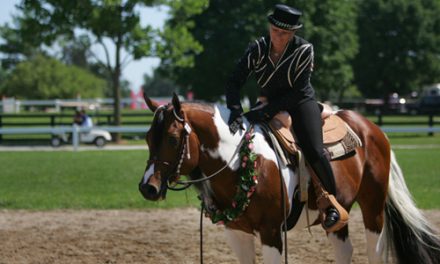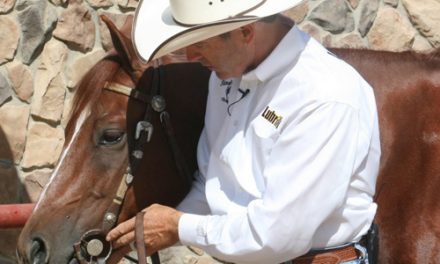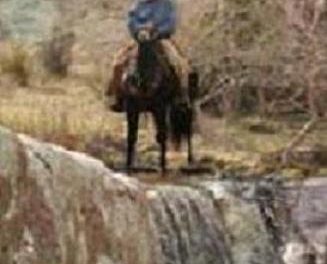 “Whoa” may well be the most important cue you teach. It is essential for your safety that you can get your horse stopped when you need to.
“Whoa” may well be the most important cue you teach. It is essential for your safety that you can get your horse stopped when you need to.
Getting your horse to move out
Start by having your horse move out at a nice, energetic walk. Using your seat and legs, drive your horse forward. Make sure to keep this energy going throughout the exercise and do not let him just shuffle along.
The hind-end of your horse should be driving underneath him. If the hind-end is trailing behind when you ask for the stop, you will always get a stop on the front-end. If it helps, picture your horse’s hind feet driving up under him all the way to his front legs. This won’t actually happen, but if you are picturing this it will help you get the hind-end really driving forward.
The stop
Make sure you have a clear picture in your head of what you want each stop to look like. For the horse to do what you want, you must first know what you want.
Pick an exact place you want your horse to stop each time. You can use sections of the arena wall as markers, or if you are outside you can use rocks or trees for markers. Just make sure you have something very specific you are aiming for.
When asking your horse for a stop, completely remove all leg pressure from your horse. Relax your seat and drop your shoulders down into your hips. It is easy to throw your shoulders back in this step, but that gets in your horse’s way and puts you in an incorrect position. Sink down, not back. Now, exhale and say “whoa” quietly and calmly. If your horse stops with his nose soft, let him stand for a few seconds, and then back-up a few steps.
If you get a good stop, reward him by letting him rest and catch his breath. The point of this exercise is not to tire him out so much that he stops, but to change his attitude and understanding so that he stops when you ask.
When you are asking for a stop, think of a back-up. If your horse is going forward, he physically has to stop before he can go backwards. If you are thinking of and asking for a back-up, your stop will be there as part of the process. Practice this at the walk until the stop is automatic.
More practice stopping your horse
After stopping your horse successfully, ride off in another direction. Then ask him to stop again. Avoid stopping every ten- feet in a straight line over and over again.
Ensure that your horse is kept moving between stops. That way, he looks forward to stopping because it means he gets to rest.
Problems
There is no point in asking for a stop if your horse is not set up correctly. If he is bracing on the bit, get him soft before you ask for the stop. If your horse tosses his head or doesn’t stop when you ask, get him to soften and then go right back to work.
When you are asking for a stop, only say “whoa” once. If you keep saying, “whoa, whoa, whoa,” as your horse is still walking forward, you are teaching him to ignore you.
If your horse takes a few mores steps after you’ve asked him to stop, then back him up to the place where you originally said “whoa.” Stop him there and only then repeat “whoa” once. By doing this, you are telling him, “This is where you should have stopped in the first place.”
Stopping from the trot or the lope
When your stop is completely automatic at the walk and your horse is stopping softly on the first whoa, you are ready to move up to the trot.
When you have an excellent stop at the trot, you can then try stopping at the lope. Work on both leads equally. Moving from a nice stop at the walk, to the trot, and then to the lope will take multiple training sessions.
Ken McNabb grew up on a cattle ranch and is a life-long horseman, as well as a popular trainer and clinician, whose methods are based on his work with John Lyons and his own experiences with horses. Ken is known as being a master communicator who helps both horse and rider become the best they can be. Ken is regularly featured on RFD-TV. Learn more about Ken by visiting www.kenmcnabb.com





